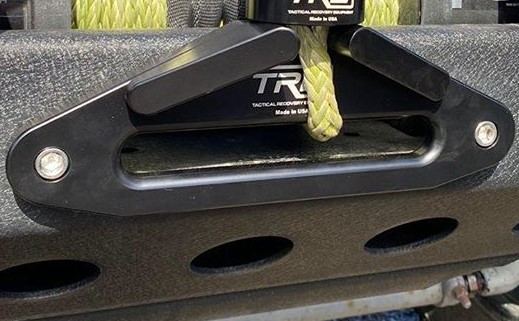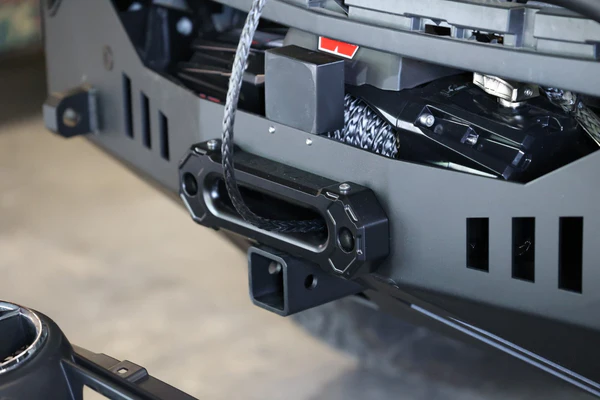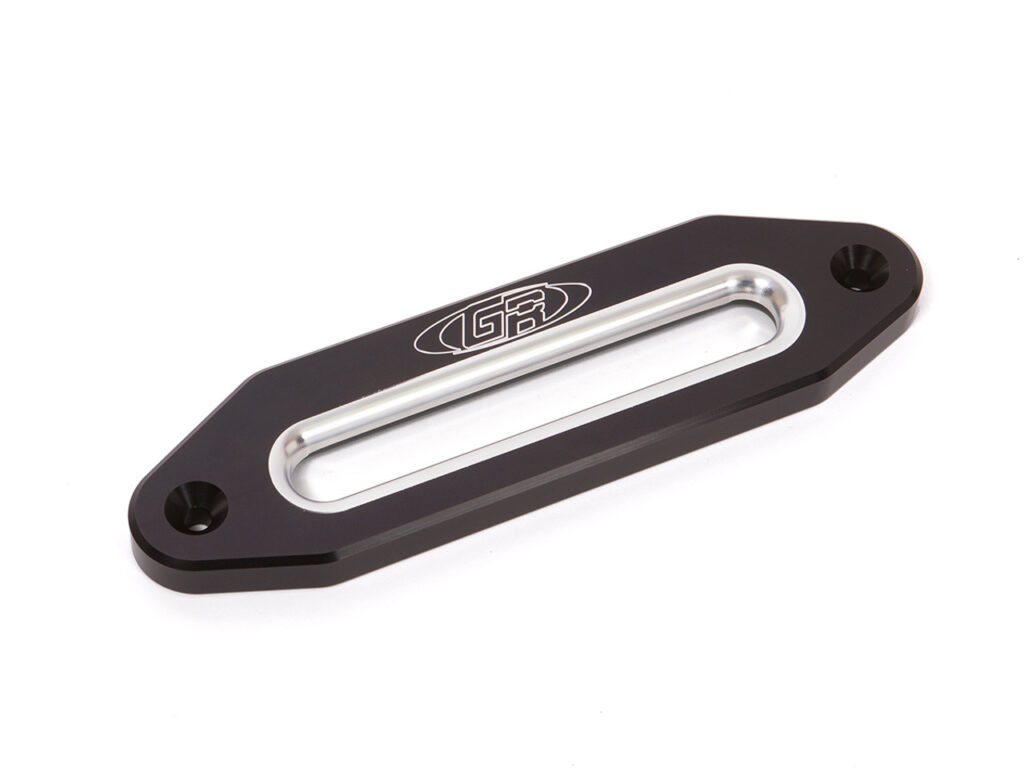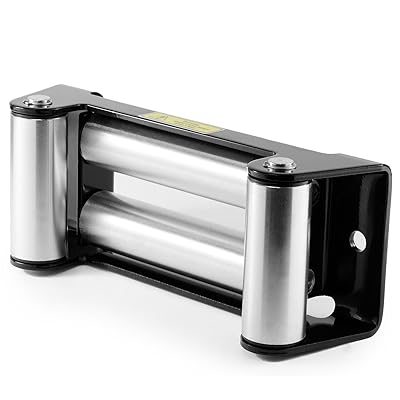A winch fairlead is a vital part of any off-road winching system. It ensures the cable or rope is properly aligned and protected as it spools onto the winch drum. This reduces wear, prevents tangles, and extends the life of the winch line. In this guide, you’ll learn what a winch fairlead is, how it works, the different types (roller and hawse), and how to choose the best one for your off-road setup.
What is a Winch Fairlead?

A winch fairlead is a crucial component of the winching system in an off-road vehicle. It’s designed to guide the winch cable or rope, ensuring it winds smoothly onto the winch drum during operation.
Detailed Definition and Primary Function
The best winch fairlead serves several important functions:
- Guiding the Cable or Rope: The fairlead directs the winch cable or rope, keeping it aligned as it winds onto the drum. Proper alignment prevents tangling or overlapping, which can cause serious issues during winching.
- Reducing Friction: One of the main purposes of a winch fairlead is to reduce the friction between the cable and the surfaces it rubs against. Friction can cause significant wear and tear on the cable, leading to fraying or breaking over time. By providing a smooth surface for the cable to move against, the fairlead minimizes this friction and helps prolong the life of the cable.
- Preventing Damage: Without a fairlead, the winch cable could easily be damaged. The cable might kink, snag, or even break if it’s not properly guided. Repairing or replacing a damaged cable can be costly and could leave you in a difficult situation during a recovery operation.
Location on the Vehicle
The winch fairlead is usually mounted on the winch plate or bumper at the front of the vehicle. Its position is strategic for several reasons:
- Optimal Cable Alignment: Being at the front of the vehicle, the fairlead ensures the winch cable is pulled straight out from the drum, which is the most efficient and safe way to use the winch.
- Accessibility: Mounting the fairlead on the bumper or winch plate makes it easily accessible for maintenance and inspection. It’s important to regularly check the fairlead for any signs of wear or damage to ensure it functions properly when needed.
Importance in Off-Roading and Recovery Situations
In off-roading and recovery situations, the winch fairlead is indispensable. Off-road terrains often present unpredictable challenges, such as mud, rocks, and steep inclines.
A winch fairlead ensures that your winch cable or rope operates smoothly and efficiently, reducing the risk of damage and enhancing the overall performance of your recovery gear.
- Ensuring Reliable Winching: With a fairlead in place, the winch cable is less likely to suffer from kinks or fraying, which can compromise its strength and reliability. This is crucial when you rely on your winch to pull your vehicle out of a tough spot.
- Safety: A properly functioning fairlead contributes to the safety of winching operations. It helps maintain the integrity of the cable, reducing the risk of sudden breaks that could lead to accidents or injuries.
How a Winch Fairlead Works

A winch fairlead is a vital component in the winching process, providing guidance and protection for the winch cable or rope. Here’s a detailed look at how it works and its essential functions:
Guiding the Winch Cable or Rope
The primary function of a winch fairlead is to guide the winch cable or rope as it is pulled in and out of the winch drum. This guidance is crucial for several reasons:
Straight Path: The fairlead ensures that the cable or rope follows a straight path onto the winch drum. This straight alignment prevents the cable from overlapping or tangling, which can cause serious damage and inefficiency during winching operations.
Controlled Winding: By keeping the cable aligned, the fairlead helps in the controlled winding and unwinding of the cable, ensuring it wraps evenly around the drum. This even winding is essential for maintaining the cable’s strength and functionality.
Reducing Friction and Wear
Friction is the biggest threat to winch cables and ropes. Excessive friction causes wear and tear, reducing the cable’s lifespan.
The winch fairlead plays a crucial role in minimizing this friction:
Smooth Surface: The fairlead provides a smooth surface for the cable or rope to slide against. This smoothness reduces the amount of friction generated during the winching process.
Longevity of Cable: By reducing friction, the fairlead helps to extend the lifespan of the winch cable or rope. Less friction means less wear and tear, allowing the cable to perform efficiently for a longer period.
Preventing Kinking, Fraying, or Snagging
One of the most critical functions of a winch fairlead is to prevent the winch cable or rope from kinking, fraying, or snagging. These issues can severely weaken the cable and lead to failures during winching operations:
Maintaining Shape: The fairlead helps maintain the shape and integrity of the cable by ensuring it winds and unwinds smoothly. This smooth operation prevents kinks, which are bends that can cause the cable to weaken and eventually break.
Avoiding Damage: By guiding the cable correctly, the fairlead prevents fraying and snagging. Fraying occurs when the outer strands of the cable start to wear away, while snagging happens when the cable catches on rough surfaces. Both issues can compromise the cable’s strength and reliability.
Enabling Multi-Directional Pulls
Off-roading often requires winching from various angles, and a winch fairlead makes this possible:
Versatility: The fairlead allows for winching from different directions, including side pulls, upward pulls, and downward pulls. This versatility is essential in off-road situations where the vehicle might be stuck in awkward positions.
Flexibility: Multi-directional pulls enable the driver to maneuver the vehicle out of challenging spots more effectively. Whether pulling from the side to navigate around obstacles or pulling upwards to lift the vehicle out of a ditch, the fairlead ensures the cable remains guided and protected.
Types of Winch Fairleads
Winch fairleads come in two main types: Hawse fairleads and Roller fairleads, each designed for specific types of cables and ropes.
Hawse Fairlead (for Synthetic Ropes):

- Design Features: A Hawse fairlead is typically a flat, smooth piece of metal with a rounded opening. It is designed to work best with synthetic ropes.
- Benefits: Hawse fairleads are lighter and quieter compared to roller fairleads. They are also safer for synthetic ropes because they reduce the risk of abrasion and damage.
Roller Fairlead (for Wire Cables):

- Design Features: Roller fairleads consist of multiple rollers (usually four) arranged vertically and horizontally. These rollers move with the cable, reducing friction.
- Benefits: Roller fairleads are excellent at reducing friction and extending the life of wire cables. They are particularly useful for heavy-duty winching operations where the cable might experience significant stress and wear.
Also check: Winch Hawse vs Roller Fairlead
Importance of Winch Fairleads in Off-Roading
Winch fairleads are not just accessories; they are essential components that protect your investment and enhance your off-roading experience.
Protecting Your Investment: Winches and cables are expensive. A fairlead helps protect them by reducing wear and tear, ensuring they last longer and perform better.
Enhancing Safety During Winching Operations: A well-maintained cable guided by a fairlead is less likely to snap or fail during a recovery operation, enhancing the safety of the process.
Improving Winching Efficiency and Performance: With reduced friction and smoother operation, winching becomes more efficient. This means less strain on your vehicle and quicker recovery times, which is crucial in off-road situations.
Also Check
Conclusion
Understanding the role of winch fairleads and choosing the right one for your needs can significantly enhance your off-roading and recovery experience. Whether you opt for a Hawse fairlead for your synthetic rope or a roller fairlead for your wire cable, ensuring you have the right equipment is key to a successful and safe adventure.
FAQs
Are there universal fairleads that fit all winches?
Most fairleads are designed to fit standard winch mounts, but it’s always best to check compatibility with your specific winch model.
Can I use a roller fairlead with a synthetic rope?
It’s not recommended because the rollers can cause abrasion and damage to the synthetic rope. A Hawse fairlead is a better choice for synthetic ropes.
Do I need a fairlead if I rarely use my winch?
Yes, even if you rarely use your winch, a fairlead can protect the cable and ensure it’s in good condition when you do need it. It’s a small investment for added safety and longevity.

